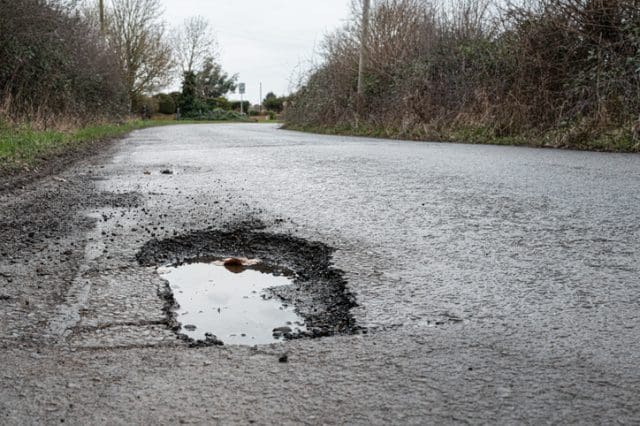Potholes are causing even more problems for taxi drivers – because of the condition of the roads and the soaring cost of repairs.
This double whammy not only means the price of fixing damaged tyres, wheels, suspensions, etc, has gone up, but the number of potholes on the roads means they are more likely to hit one.
Rising costs
In fact, Kwik Fit’s Pothole Impact Tracker report shows that the cost of pothole damage has reached £1.7bn last year. The report has been tracking the average price of pothole repair bills since 2013 and found that over the last 12 months, the average had increased by £24 to £144. It also shows that there was also an increase in the number of drivers facing higher bills of £300 or more.
Looking at the bigger picture, Fleet World reports that Kwik Fit’s data includes all cars suffering pothole damage, not just those which have to be recovered from the roadside, but also those which can be driven to a garage.
It says that the hi-tech systems fitted to modern cars also means that what used to be a straightforward wheel or suspension repair can now be far more expensive, with a variety of sensors and components being damaged. The PIT report found that 48% of cars repaired also needed wheel alignment, and 34% required driver-assistance systems to be recalibrated.
Repairs
Despite the rising cost, the report found that 70% of drivers paid for the repairs themselves – probably so they could get the car back on the road quickly – while 16% claimed on their car or taxi insurance. The report also noted that 7% had separate tyre insurance policies.
Kwik Fit’s research found that just 6% of drivers affected had claimed compensation from the local authority responsible for the road.
Fleet World also reports that as more cars are fitted with larger wheels, tyre and wheel damage becomes more expensive to replace. It notes Kwik Fit has seen the number of its Tyrecare policies almost double over the past two years.
Rough ride
The PIT report found that 51% of drivers believe roads in their area are in a worse condition than they were 12 months ago, with only 16% thinking they are better. And 62% aren’t expecting roads to improve in the near future either.
Dan Joyce, operations director at Kwik Fit, said: “It’s concerning to see that the downward trend of the past two years has gone into reverse in the latest figures. Anything which adds unnecessary costs to motorists is especially unwelcome in the current economic climate, but even the financial burden is outweighed by the risk to safety.
“The main components which bear the bulk of the damage – tyres and wheels, suspension and steering – are interlinked.
“Even if a car is driveable after hitting a pothole, the impact may have compromised its handling, as can be seen by the fact that many drivers have had to have vital ADAS technology recalibrated.
“Not only do potholes present an immediate risk at the time of impact, they can have a longer-term effect on its safety on the road.”
Top tips
While drivers can’t do anything about the state of the roads, they can try and reduce the damage if they hit a pothole. Kwik Fit recommends maintaining the correct tyre pressure, which will help absorb some of the impact.
It also recommends slowing down so you have more time to avoid potholes and causing less damage if you do hit one.
Drivers who hit a pothole are urged to check their vehicle immediately and monitor things for a few days, looking out for changes in handling or unusual noises as the damage might not be obvious.




